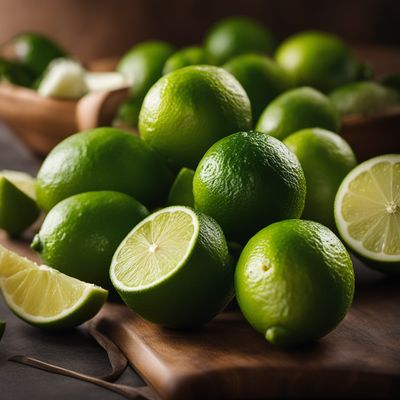
Ingredient
Citrus fruits
"Zesty Delights: Exploring the Vibrant World of Citrus Fruits"
Bursting with vibrant colors and invigorating aromas, citrus fruits are characterized by their juicy flesh, thin rinds, and a balance of sweetness and acidity. From the zesty punch of lemons and limes to the sweet-tartness of oranges and grapefruits, these fruits offer a wide range of flavors and textures. The flesh can vary from pulpy segments to smooth membranes, while the rinds can be smooth or bumpy, depending on the variety. With their refreshing taste and versatility, citrus fruits add brightness and complexity to both sweet and savory dishes.
Origins and history
Citrus fruits have a rich history that dates back thousands of years. Believed to have originated in Southeast Asia, they were first cultivated in China and India. From there, they spread to the Mediterranean region, brought by traders and explorers. Citrus fruits played a significant role in ancient civilizations, with references found in ancient Greek, Roman, and Egyptian texts. They were highly valued for their medicinal properties and were considered a symbol of wealth and prosperity. Today, citrus fruits are grown in various parts of the world, including the United States, Spain, Brazil, and Italy.
Nutritional information
Citrus fruits are packed with essential nutrients, including vitamin C, which supports the immune system and promotes collagen production. They are also a good source of dietary fiber, potassium, folate, and antioxidants. With their low calorie content and high water content, citrus fruits make a healthy addition to any diet.
Allergens
Citrus fruits are generally not associated with common allergens, making them suitable for most individuals. However, some people may experience sensitivity or allergic reactions to citrus fruits, so caution should be exercised.
How to select
When selecting citrus fruits, look for fruits that are firm, heavy for their size, and have smooth, brightly colored skin. Avoid fruits with soft spots, blemishes, or mold. The skin should be thin and glossy, indicating juiciness. For juicing, choose fruits that feel heavy and yield slightly to pressure when gently squeezed.
Storage recommendations
Citrus fruits are best stored at room temperature if they will be consumed within a few days. For longer storage, they can be refrigerated in a crisper drawer, where they can stay fresh for up to two weeks. To maintain their juiciness, store citrus fruits in a perforated plastic bag to prevent moisture loss.
How to produce
Citrus fruits can be grown by amateur gardeners in regions with a suitable climate. They thrive in warm, subtropical climates and require well-drained soil and plenty of sunlight. Citrus trees can be grown from seeds or propagated from cuttings. However, it is important to note that growing citrus fruits can be a long-term commitment, as they may take several years to bear fruit.
Preparation tips
To extract maximum juice from citrus fruits, roll them gently on a countertop before juicing. This helps break down the membranes and release the juice. When zesting citrus fruits, use a fine grater or a zester to remove the flavorful outer layer of the skin, being careful not to include the bitter white pith. Citrus fruits can be used in a variety of ways, including as a flavor enhancer in marinades, dressings, desserts, and beverages. They can be segmented, juiced, or used as a garnish to add a burst of freshness to dishes.
Substitutions
If citrus fruits are not available, suitable substitutes include vinegar or other acidic fruits such as pineapple or kiwi, depending on the recipe. However, keep in mind that these substitutes may alter the flavor profile of the dish.
Culinary uses
Citrus fruits are widely used in both sweet and savory dishes. They are commonly used in marinades, salad dressings, sauces, and desserts. The zest and juice of citrus fruits add brightness to baked goods, cocktails, and refreshing beverages. In savory dishes, citrus fruits can be used to balance rich flavors or to tenderize meat. They are also a popular addition to fruit salads and can be enjoyed on their own as a refreshing snack.
Availability
Citrus fruits are commonly available in regions with a suitable climate for cultivation. They are cultivated in countries such as the United States, Spain, Brazil, Italy, and many others.






